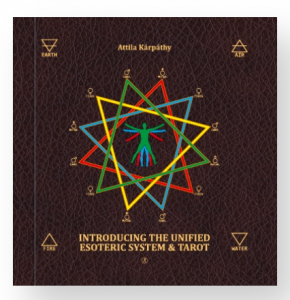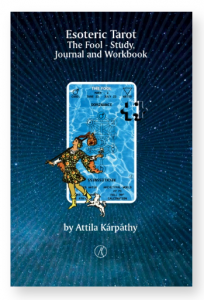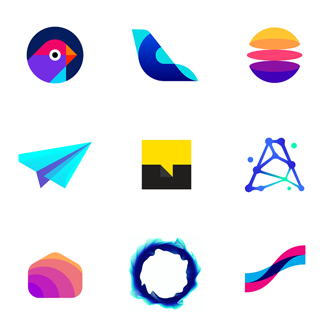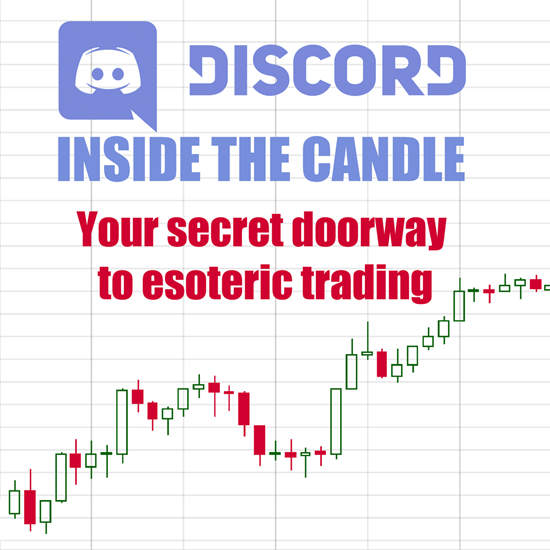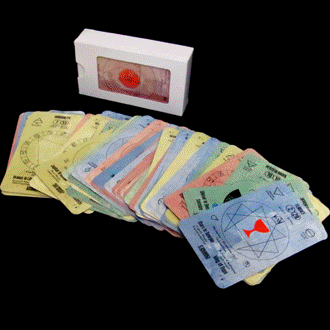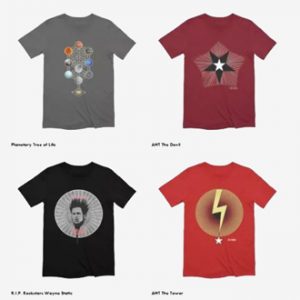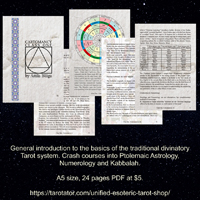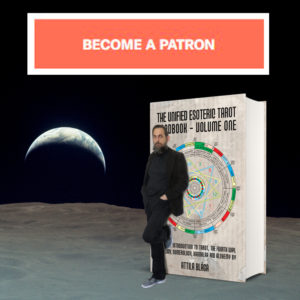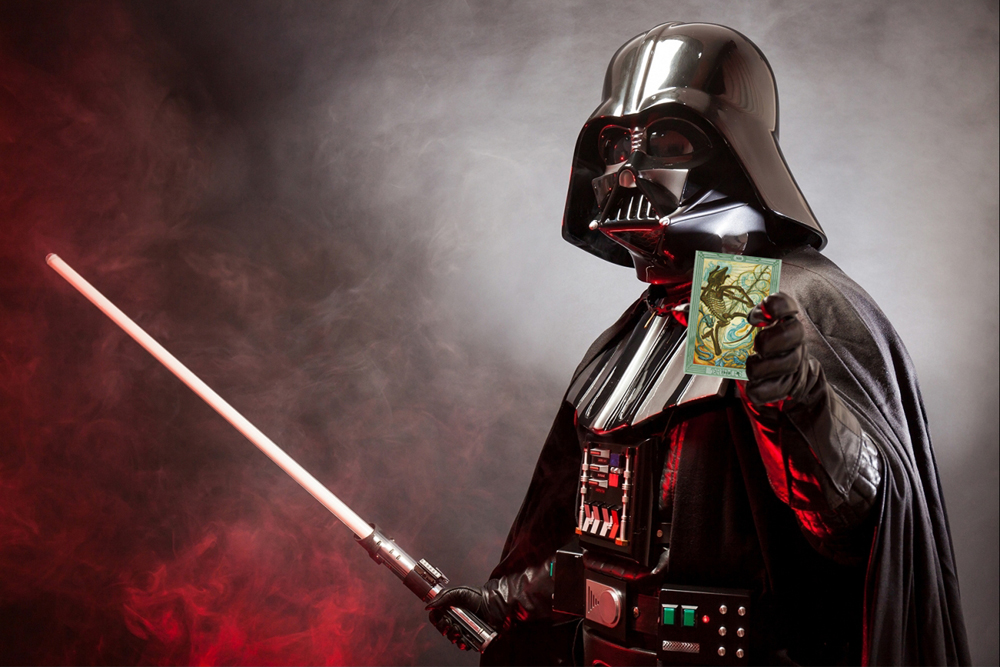
“Esoteric” means hidden, secret, belonging to the select few; while “exoteric” means “public”, respectively commonly known, accessible for large masses, respectively to anybody. Gurdjieff also speaks about a third circle, the “mesoteric” which is in the middle, respectively in between the esoteric and exoteric circles .
Think of an egg. On the outside is the eggshell. The eggshell would be the “exoteric” circle. The surface which is accessible for everybody. On the inside is albumen – or egg white – which would be the “mesoteric” circle. In the middle of the egg white, protected and hidden is the egg yolk which would be the “esoteric” circle.
According to Gurdjieff, people belonging to the “exoteric” circle are the so-called “mechanical humanity”, people exposed and living by the rules and will imply from outside, people living their lives unconsciously.
People from the “mesoteric” circle know many things and understand some, but these things have not yet found expression in their actions. Their knowledge is of a more theoretical character, and they refer to as being of “cosmic character”.
People belonging to “esoteric circle consists of people who have attained the highest development possible for man, each one of whom possesses individuality in the fullest degree, an indivisible “I”, all forms of consciousness possible for man, and a free and independent will.
There is a correlated relationship between theory and practice , just like there is a similar connection between the harmonious development of the body, the soul and the mind.
In traditional, esoteric terms theory is represented by “dogma”, while the practice by “ritual”. Without fully understanding the theoretical aspects, practising might be considered an irresponsible and dangerous adventure.
The “esoteric”, sometimes highly theoretical matters are not accessible to the vast majority of the people. Most of the people consider them abstract, irrelevant and not “useful” in practical terms.
It is crucial to understand these abstract and theoretical aspects from the perspective of good practice and applying those concepts to real-life situations.
The vast majority of these so-called “esoteric” materials were physically hardly accessible, not at the disposal of any ordinary man, generally kept in private collections and libraries till quite recent times.
Today most of this knowledge it is only one click away. Still, it remains inaccessible for the vast majority of the audience.
On the one hand, the very notion of “esoteric” and “occult” was systematically discredited as being “bogus” and irrelevant ancient or medieval superstition. It was considered and described as “mystic” respectively as “mystification” meaning “falsification”. Esotericism is scientific, and it is based on laws and principles that govern the entire Universe.
On the other hand, sometimes the language, the terminology and not at least, the style, the allegories and parabolas used by these authors seem to be difficult to understand for the modern man.
I often heard complains that Crowley or John Dee is pretty interesting but impossible to read. Others said that Astrology is too complicated, hard to understand and learn and they, instead of learning, prefer to read the cards ‘intuitively’ without astrological correlations. It is fine, but it is not Tarot, but Oracle and so-called psychic practice. Tarot is Astrology and Numerology based; it is built upon precise laws and principles. “Reading” means that someone knows and understand the language, and not that guessing or imagining things, respectively freely interpreting images. This is the fundamental difference between Oracles and Tarot cards, respectively readers. It is not the type of the card someone may use, but the method she or he might use.
There is another aspect in this which became relevant when I started studying seriously Alchemical materials. Alchemical authors typically used to hide the true message in meaning inside allegories and parabolas, very often hiding the key to one formula within the description of another chapter. It is the case of Basile Valentin’s “The Twelve Keys of Basil Valentine”, but it is not an isolated exception, it seems to be the common practice of that period and for this type of works.
I use this example because I consider it relevant when someone says “ball” each think of a different type of ball; some think of a tennis ball, other of a golf ball, while somebody else of a football ball. Things are getting even more complicated – and confusing – when it comes down to abstract notions such as “conscious” or “subconscious”.
It was a common practice to encode the information, respectively to introduce “inexactitudes” inside the esoteric teachings, to mislead on purpose the untrained, “un-initiated”, simple, “unworthy” individuals. Sometimes, the key to deciphering is hidden within the same document, but sometimes someone has to find it by understanding the very spirit of the teachings, instead of learning and memorising “facts”- read “inexactitudes” – mechanically.
Even today, people tend to confuse basic notions such as “soul” and “spirit”. In different places and circumstances, I stumbled into the formula: “mind, body and spirit”. “Mind” and “spirit” represent the same thing. The correct formula would be “mind, body and soul”, respectively “spirit, body and soul”. Spirit, body and soul are basically, one of the classic formulas to depict “trinity”.
One of my objectives was to make the basic esoteric teachings available for everybody interested in understanding them in a simple, systemized and accessible form.
Explaining the basic esoteric notions simply and transparently, in plain English, has become one of my primary goals. Not being a native English speaker, I think is quite a significant advantage in these circumstances.
I proposed not only a different and correlated approach on the esoteric teachings within the framework of the Tarot but also a different method of understanding the very foundation of these sciences and them elements as part of a unitary system. Instead of mechanically memorising the meaning of these concepts and components out of context, I encourage to learn and understand the basic notions.
We are living dangerous times when everybody can claim anything, the times of “false prophets” when the internet facilitated the opportunity to The Fool to became The Hierophant. Umberto Eco noticed: “Social media gives legions of idiots the right to speak when they once only spoke at a bar after a glass of wine, without harming the community.” The main problem with the internet is that it gave access both to reliable materials and completely twisted out stuff, and without basic education, experience and a trained, critical mind, sometimes it is impossible to tell the difference.
People also tend to believe that if some things stay unchanged for hundreds or thousands of years that mean they are verified and correct. Unfortunately, it is not quite true. People for centuries, in absolute good fate copied from one another ideas and those ideas, became “common knowledge”, but that does not necessarily mean they are accurate and correct, except any further analyses, verification and correction.
Presumably, Joseph Goebbels, the Nazi propaganda mastermind said that “repeat a lie often enough and it becomes the truth”. However, it is not actually “the truth”, but only an “illusion of truth”. The things – or facts – don’t change their nature, but our perception might be influenced and hijacked.
Sometimes people rely on notions they consider accurate and correct because they got the same information from multiple sources and they became grounded and accepted, but that information can be distorted, incomplete, inaccurate or effectively false because it was never properly verified – only retreated. Moreover, things only get worst with the spectacular development of technology.
There is a re-rendering of the same phrase attributed to Goebbels: “If you tell a lie big enough and keep repeating it, people will eventually come to believe it.”
However, in the Age of Technology, of the massive amount of data circulating at the speed of the optical cables, numerous smaller lies, respectively the right amount of erroneous data inserted between facts, combined with our mechanical manner of processing the information and learning, may be more effective than one “big lie”.
The main issue here is that we tend to “believe”, which is purely an emotional process, instead of analysing and thinking, which would be a rational – spiritual – process. Moreover, it is my personal opinion based on study and observation: we are educated, manipulated, constantly cultivated to act this way. A person who is emotionally sensitive and who base all her/his decisions on his subjective emotional perception is a person easy to manipulate.
Aparup Pakhira, Assistant Professor at KIIT Law School, noted: “The inherent nature of general public is that they are habitually obliged to believe the people those are famous in their respective fields. These people when say something wrong, then first-time people cannot distinguish between wrong and right until or unless they apply their own mind. However, subconsciously they accept the wrong.”
Regarding the use of these terms related to the Tarot practice, “exoteric” may refer to the use of the Tarot cards for so-called “fortune-telling”; for predictions and foresee “mundane”, “earthly” matters, sometimes without having theoretical knowledge and in-deep understanding of the Tarot and the esoteric system.
“Mesoteric” is the use of the Tarot as an instrument of self-observation, self-remembering and self-development. As Gurdjieff noted, it is almost impossible for someone to ‘wake up’ by her or his own will. Tarot is an instrument of awakening and enlightenment.
In my opinion, someone hardly is capable of evaluating her or his person objectively, so, appealing to a genuine Tarot reader is the best alternative. However, finding genuine Tarot readers is more difficult as it might seem at first sight.
Tarot is the instrument which should be used by all the therapists to observe and study others. Someone may lie and mislead anybody else, inclusively her or his self, but will never be able to lie or mislead the Tarot cards. At least, this is my experience in last twenty-five years.
Not many people truly know, understand and are aware of the “esoteric” aspect of the Tarot.
Some people are afraid of the “evil forces” which may lies secretly behind the Tarot cards. Nowadays, this kind of approaches is discredited and taken in derision. I would not encourage this hasty judgement.
The origin of the Tarot deck remains subject of debates. One of the few certitudes is that the first documented Tarot decks were recorded between 1440 and 1450 in Northern Italy, respectively in Milan, Ferrara, Florence and Bologna.
Pope Martin V convoked the Seventeenth Ecumenical Council of the Roman Catholic Church at Basel in 1431. The initial location reflected the desire among parties seeking reform to meet outside the territories of the Papacy and the Holy Roman Empire.
Pope Eugene IV convoked a rival Council of Ferrara on 8 January 1438 and succeeded in drawing the Byzantine ambassadors to Italy. On 9 April 1438, the first session at Ferrara began, with the Eastern Roman Emperor, the Patriarch of Constantinople and representatives of the Patriarchal Sees of Antioch, Alexandria and Jerusalem in attendance and Pope Eugene IV presiding.
The new council was transferred to Florence in 1439 because of the danger of plague at Ferrara. The Council had meanwhile successfully negotiated reunification with several Eastern Churches. A declaration of the union was proclaimed in 1439, but it was kept secret until 1452 and has never been accepted by most Eastern Churches.
What is of key importance is that the Eastern Roman Emperor had been accompanied to Italy by hundreds of scholars, including ecclesiastics. As the scholars expected to have to quote from original texts, they had brought a large number of manuscripts. There were a considerable number of works previously unknown to the West.
It seems highly unlikely that the first decks of Tarot cards surfaced “accidentally” right after that in the same area.
The architect and the man behind the scene of moving the council to Florence were Cosimo di Giovanni de’ Medici. Cosimo de’ Medici was an influential Italian banker and politician, the first member of the Medici political dynasty that served as de facto rulers of Florence during much of the Italian Renaissance.
In 1444, Cosimo de’ Medici founded the first public library in Florence, at San Marco, which was of central importance to the humanist movement in Florence during the Renaissance. He also established a Platonic Academy in Florence in 1445 led by Marsilio Ficino and supposedly influenced by Gemistus Plethon , one of the scholars arrived with the delegation of the Eastern Roman Emperor, John VIII Palaiologos.
It is also worth mentioning the connections of Cosimo de’ Medici with Francesco I Sforza and subsequently to the Visconti family of Milan. If these names do not ring any bell yet, I only say that The Visconti-Sforza Tarot contains the oldest known surviving Tarot cards. The deck composed of 78 cards was commissioned by Filippo Maria Visconti , and, according to scholar Giordano Berti, was produced between 1442 and 1447. The Visconti-Sforza Tarot, also known as Colleoni-Baglioni and Francesco Sforza, now contains 74 cards; 20 trumps, 15 face – or Court cards –, and 39 numeral – or pip – cards, located in various museums, libraries, and private collections around the world. Obviously, just another coincidence.
Among the most influential books translated to Latin during that period, we should mention at least two: Corpus Hermetica and Picatrix. The Corpus Hermeticum was translated by Marsilio Ficino and are Egyptian-Greek wisdom texts from the 2nd century AD. Attributed to the mysterious Hermes Trismegistus , Corpus Hermeticum form the basis of Hermeticism.
Picatrix, on the other hand, is a composite work that synthesises older works on Magick and Astrology. It is originally written in Arabic under the title Ghāyat al-Ḥakīm which translates as The Aim of the Sage or The Goal of The Wise. The Arabic work was translated into Spanish and then into Latin during the 13th century, at which time it got the Latin title Picatrix. Generally, it is regarded as a “handbook of talismanic magic.” Now, this is quite interesting because, according to the author(s) of the book, the magician creates images, talismans, which were held to capture the power of the star(s) to store it for use. We have learned from the Picatrix that the Arab word for talisman, “talsam,” written in reversed becomes “maslat” which means domination or control. “It functions according to the purpose it was composed for: overpowering and coercing, by using numerical ratios and placing astrological secrets in certain bodies.” It seems obvious that the Tarot cards are images, respectively talismans built “by using numerical ratios and placing astrological secrets” into them. These “secrets” were part of the common knowledge in the Arabic world. One relevant example is the city Harran.
Harran was the centre for the worship of the Mesopotamian moon god Sin. Biblical Harran was where Terah, his son Abraham, his nephew Lot, and Abram’s wife Sarai settled on their journey from Ur to Canaan. Although Sin’s temple was one of the most famous in antiquity, within the four kilometres of defensive wall lay seven temples for each of the known planets. Each of the temples in Harran was a type of “talisman” design to draw down the influences of the got into itself. Ancient Babylonians and Assyrians believed that the god was immanent in her or his statue, and the builders of Harran took that idea further and built the temples in such way that the entire structures would be infused with the presence of the god.
In talismanic magic, a deity’s power is attracted into a physical object where that power resides in concentrated form. In the case of Harran, the aim was to create the conditions for these divine forces to affect any person who entered the temples.
The academically recognised American author, Eileen Connolly in her book “Tarot: A New Handbook for the Apprentice” claim that there is a secret and yet undiscovered chamber under the Great Pyramid of Giza where presumably are exposed 108 plates which represent the Universal Laws. 78 of these plates are known as “exoteric” Tarot, and these are the Tarot cards we know, but there are also still hidden 30 more plates which represent the so-called “esoteric” Tarot.
The idea that the original Tarot cards at some point in antiquity have been craved stone plates or clay tablets are highly speculated in most of the Tarot circles.
Comte de Mellet also expressed his opinion that the Arabs had brought “this book” – The Book of Thoth – to Europe. The term “reading the cards” may also be a reference to some sort of book consist of wisdom and knowledge.
The world’s oldest known astrological text, the “Enuma Anu Enlil” is a major series of 68 or 70 tablets dealing with Babylonian astrology. The bulk of the work is a substantial collection of omens created from information and observations over hundreds of years. An omen is a phenomenon that is believed to foretell the future, often signifying the advent of change. The clay tablets were kept together like reference books so that scribes could use them to interpret the meaning of certain events and how they would affect the king.
The first 13 tablets deal with the first appearances of the Moon on various days of the month. Tablet 14 details a basic mathematical scheme for predicting the visibility of the Moon. Tablets 15 to 22 are dedicated to lunar eclipses. Tablets 23 to 29 deal with the appearances of the Sun, while the Solar eclipses are explored in tablets 30 to 39. Tablets 40 to 49 concern weather phenomena and earthquakes, special attention being devoted to the occurrence of thunder. The final 20 tablets are dedicated to the stars and planets.
Similarly, according to the Golden Dawn system, there are at least nine Tarot cards dealing with different aspects of the Moon; about eight cards dealing with the Sun and so on.
Thus, the Babylonians believed that the gods were immanent in their statues, it is highly possible that they believed that the gods were also immanent in the clay tablets which recorded their movements and activities. There are striking similarities between the clay tablets and the Tarot cards. They may have been used differently and may serve different purposes, but they were created based on the same knowledge and principles.
There is also a less dark side of the esoteric aspect of the Tarot.
More or less secret, respectively hermetic organisations such as The Hermetic Order of the Golden Dawn, used the Tarot deck as an integrated instrument of learning and initiation. By studying and learning the Tarot deck, the Neophyte, have acquired step by step advanced knowledge of Astrology, Numerology and Kabbalah, respectively of the complete theoretical and practical system of the Golden Dawn. Interestingly, the Order disbands at the beginning of the 1900’s, and most of their esoteric knowledge meanwhile became common, public, so-called exoteric knowledge.
Tarot is not a toy, not an instrument of entertainment; I actually would go there to state that it is not a human invention or, at least, not belonging to our civilisation. It is too perfect, too accurate, too sophisticated to accept the idea that it was a human invention in the middle of the fifteen century out of boredom and with purely entertaining purpose. I also firmly reject the theory that it was a further development of the deck of playing cards.
Studying the structure and the architecture of the Tarot deck proves that whoever created it, knew the exact map of our solar system, and as we know, the perception of our Universe in the middle of fifteen century was fundamentally erroneous, based on religious considerations and not on esoteric laws and principles. However, the Tarot is an esoteric instrument and the very essence of the entire esotericism.
The question still stands: is it the Tarot dangerous or is it not?
The answer, however, is not that simple.
Handled with care and being aware of its full potential, the Tarot, just like a nuclear weapon, generally speaking, is, relatively, safe.
I keep my Tarot cards in a wood box, folded in silk. It is not out of any “mysticism” or superstition; it is a simple safety measure. Cannot leave your cards laying around randomly. Each time I use the Tarot cards, I light one candle, and for each reading I make, I burn a tea candle individually. It is not to create “mystic” ambience, but it has a cleansing purpose.
Did you ever consider why Aleister Crowley had the interest to create his own Tarot deck and after five years of assiduous work, he rejected the completed version of Lady Harris? Not one of them was entirely satisfied by the final result, and they both agreed not to publish the deck. The first full publication was released by the Ordo Templi Orientis (OTO) in 1969, twenty-two years after Crawley’s death and seven years after Lady Harris’ death. Although it might be possible, I seriously doubt that OTO has any written agreement or explicit authorisation from Crowley or Harris to publish or claim copyright for the deck. However, it seems that OTO obtained legal rights over the deck.
For a long time, I thought Crowley created his own deck only out of rivalry with A.E. Waite and driven by his over-sized ego and ambition.
Very possibly this was an important driving force behind the project, but Crowley had another, less obvious, motivation as well.
Crowley’s interest in Magick was almost exclusively regarding the conjuring of demons. His entire life was gravitating around this matter and this matter only.
He studied the Kabbalah, and he studied the work of so-called practical Kabbalah by John Dee to create a communication bridge between himself and superior entities. It was more than simple interest; it was an obsession. During his life, Crowley made several attempts to contact different “supernatural entities”.
Crowley saw in the Tarot a possible instrument of conjuring and communicating with those superior entities we call angels and demons, but I prefer the more general, and from my point of view, the adequate term “spirits”.
The difference between angels and demons is strictly a matter of individual beliefs and perception. When someone believes in angles, will see angels; when someone wants to see demons, will see demons; as well, if someone wants to see aliens, will see the aliens she or he imagines. Spirits are very perceptive to our beliefs, and they will take whatever shape we prefer or we are afraid of. Find it incredibly naïve to believe that an inferior human being will ever be capable of constraining a superior being to serve her or him. These creatures whenever show themselves and get in touch with human beings they follow their own agenda.
I only suspect and speculate that Crowley, eventually, understood these things.
However, at the time he and Lady Harris started to work on the Thoth deck, he wanted to create an instrument of conjuring and controlling demons.
Is it that possible?
The conjuring part more likely, the controlling part is what I seriously doubt.
The current book is not about these esoteric practices, and I do not want to get into these matters too deep. There is a very good reason for these things are considered “esoteric” and kept “hidden” from the general public.
It is crucial to understand the attribution of the Tarot cards.
Each card represents a specific astrological aspect. For instance, Two of Wands represents Mars in Aries.
The Ptolemaic Astrology is quite elusive regarding the explanation of the nature of the planets. Although this is not entirely accurate, according to the Babylonian beliefs, each planet is a repository of the power of a specific god. For instance, the Moon was associated with “the father of time”, Sin; Venus was associated with the goddess Ishtar; Mars was associated with Nergal, and so on. The point is, Astrology was based on polytheist beliefs and notions, and it was built upon fundamental esoteric laws and principles. Subsequently, as Tarot was built on Astrology and Numerology, respectively on the same set of laws and principles, it also incorporates the same polytheist beliefs. It means that the Two of Wands which is associated with Mars in Aries and subsequently hold the possibility of conjuring Nergal.
However, Ptolemy followed the Chaldean-Hellenistic tradition and almost entirely ignored the Egyptian Astrology. As a consequence, it was developed a monotheist and dualistic model of Astrology, and no gods were mentioned, respectively the polytheist nature and foundation of the Astrology was excluded entirely and replaced according to the monotheist Jewish-Christian tradition and principles.
Subsequently, when monotheism took over polytheism, in the new lore – and folklore –, the gods were replaced by spirits. Applying the dualistic model, the “good” spirits were called angels; the “evil” spirits were called “demons”. It is a very interesting process when new gods replace the “old gods”, respectively one god replace all the others, they mythology also suffer transformation, and from benevolent beings, they were reclassified into malevolent beings. With the angels and demons something similar happened, and basically, all demons were once angels and sometimes they have the chance of redemption and return to ‘heavens’.
At this point, I have to mention that I have read and studied a quite consistent amount of so-called “grimoires.” A grimoire is a textbook of Magick, typically including instructions on how to create magical objects like talismans and amulets, how to perform magical spells, charms and divination, respectively how to invoke supernatural entities. Although, the term “grimoire” is of Old French origin indicating books which were written in Latin, the earliest known written magical incantations come from ancient Mesopotamia, where they have been found inscribed on cuneiform clay tablets and dated to between the 5th and 4th centuries BC.
Grimoires became quite popular in Europe during the Medieval period.
Aleister Crowley’s mentor, Samuel Liddell MacGregor Mathers, translated the so-called “The Greater” (1888) respectively “The Lesser Key of Solomon” (1904) from French to English. The “Lesser Key” is also known as “Goetia,” and contains the classified list of the seventy-two chief spirits.
Crowley in “777” (1982) attributed these seventy-two Spirits of the Goetia, in pairs, Day/Night to the thirty-six decans of the Zodiac . Papus was the first who have seen the connection between the Numerals and the decans of the Zodiac. Connecting the dots, we can attribute the seventy-two Spirits of the Goetia to the thirty-six Numerals of the Tarot deck, and we have got in our hands a powerful conjuring tool.
However, the attribution of the Spirits is arguable.
As I previously mentioned, the planet Mars was associated with Nergal by the Babylonians. According to the modern lorn, Two of Wands is Mars in Aries, and it is associated to Bael. Lon Milo DuQuette and Christopher S. Hyatt in their book “Aleister Crowley’s Illustrated Goetia: Sexual Evocation” stated that “the Spirit Bael is attributed to the daylight hours of the first ten degrees of Aries, and these degrees are represented in the Tarot by the Two of Wands, but that does not necessarily mean that in all matters Bael is the Two of Wands or that the Two of Wands always represents Bael.” Subsequently, we only can assume that not each card featuring Mars is attributed to Bael, respectively to Nergal.
I have my theory regarding these issues, but it is not the purpose of this current text to get into this matter any further. Eventually, I will dedicate an entire book exclusively to this subject.
There is another aspect, the Tarot spreads are also rituals, and the Tarot cards are keys to open the hidden passages to the invisible world and connect with the spirits.
Unfortunately, most of the ancient rituals have lost their content, and we only have kept their exterior, physical or theatrical forms. We usually perform these rituals without knowing and understanding their (subliminal) meaning.
These techniques and methods are long lost, and although members of the Golden Down and other similar secret organisations like OTO have tried to reanimate these ancient practices, I am not convinced they have been successful.
I have seen many people claiming that they conjured demons successfully. Most of them were only charlatans or persons with serious mental issues. However, that does not mean, it is not possible.
Modern man is superficial, ignorant and arrogant. They consider all these things “medieval humbug and superstition”, taboos, boundaries and limitations. However, all these restrictions and set of rules are in place for a good reason.
Some willingly, others by accident and unconsciously may open the door to some unwanted entities to enter into their lives. As I stated, Tarot can be used as a tool for evocation and just like someone waving a sword randomly around may hurt her/ himself or someone else nearby, the same thing can happen when somebody is “fooling” around with the deck of the Tarot cards.
The spirits need “vessels,” human bodies to be able to manifest themselves physically in our world. However, they can be present and can interfere with our lives without being “incarnated”. Someone may never notice their presence, but her/his life simply goes sideways, and it is falling apart. People do not even suspect what’s going on – and probably they never will.
I do not intend to scare anyone, but this is not a joke, and the Tarot is not a game or a toy for bored or disoriented people. It was never meant to be for the masses, nor for entertainment, but for those who can use it and work with it responsibly.
There are a couple of minimal safety measures everyone should consider to use.
Keep your cards safe and closed in a box – or your decks in boxes.
I kept my cards in a wooden box and folded in a dark violet silk scarf.
I also have some black cardboard boxes for the decks I do not use, but I have collected over the years.
I light a white candle before I start using my cards and I also light a tea candle separately for each reading I perform. I let the candles to burn down completely – never blow them off. I only use white candles.
Not at least, there are different so-called cleansing and banishing rituals that may be useful to perform before and after someone uses the Tarot cards.
The Tarot is a complex esoteric instrument. It is a lightsaber, but most people think of it and use it as a pocketknife.
How you want to use the Tarot deck is entirely up to you, and there is no “right” or “wrong” way to doing it, but my recommendation is to learn and understand the theoretical foundation of the Tarot before you start practising.
#unifiedesoterictarot #tarotdeck #tarotcards #tarot #magick #esoteric #cartomancy #divination #astrology #alchemy #numerology #kabbalah #thefourthway #aleistercrowley #conjuring #evocation
(Excerpt from the book “The Kárpáthy-Smith Tarot Handbook” by Attila Kárpáthy. Full or partial use of this text for commercial or non-commercial distribution by any means whatsoever is strictly prohibited unless expressly authorised by the author.)


